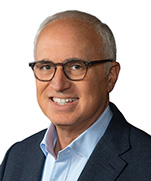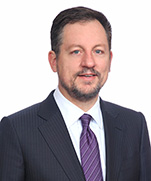Unlocking the full potential of autonomous transportation will require smart, forward-looking decisions about how to manage the spectrum on which driverless vehicles will rely. A recent announcement from Federal Communications Commission Chairman Ajit Pai shows the United States is preparing for a fully autonomous future. After months of debate, the FCC revealed next steps for re-allocating the 5.9 GHz band for both unlicensed uses and transportation-specific applications with an eye to autonomous fleet deployment.
In an effort to provide predictability for automakers and broadband providers, Chairman Pai announced that the FCC will vote this month on his proposal to initiate a process that would open up the 5.9 GHz spectrum band for new uses. By way of background, the agency first set aside spectrum in what is called the 5.9 GHz band to support transportation uses in 1999. Under current FCC rules, the 5.9 GHz band is reserved for dedicated short-range communications (DSRC), which facilitates both vehicle-to-vehicle and vehicle-to-infrastructure communications. Because DSRC has been around for three decades, some automakers and localities had begun to equip vehicles and roadside infrastructure with DSRC-based technologies. However, predictably, technology has advanced since 1999, resulting in several alternatives to DSRC, the most noteworthy being cellular vehicle-to-everything (C-V2X) communication that offers vehicle-to-vehicle, vehicle-to-infrastructure and vehicle-to-pedestrian communication.
To address technological advancements and the underutilization of the 5.9 GHz band to date, Chairman Pai has proposed allocating the upper 20 MHz of the 5.9 GHz band for a new automotive communications technology, and specifically C-V2X, while saving the lower 45 MHz of the band for unlicensed uses like Wi-Fi. Additionally, the FCC will seek further public input on whether to allocate the remaining 10 MHz in the band to C-V2X or DSRC. The Commission will vote on this Notice of Proposed Rulemaking at the agency’s December 12 open meeting.
According to Pai, C-V2X would use standard cellular protocols to provide direct communications between autonomous vehicles and other vehicles on the road, in addition to infrastructure, cyclists, pedestrians and road workers. C-V2X is also expected to support new, advanced applications as cellular companies transition to faster, more responsive 5G networks. Opening the band to C-V2X it is backed by large automakers as well as wireless carriers and wired broadband providers, who support the proposal for its commitment both C-V2X and unlicensed.
The Department of Transportation (DOT) opposes the Chairman’s proposal to allocate spectrum for unlicensed uses in addition to transportation. Prior to this announcement, the FCC had held off on 5.9 GHZ spectrum rulemaking efforts at the request of DOT Secretary Elaine Chao. The transportation agency said in a statement that its position is unchanged. “The Department of Transportation has clearly stated in testimony and correspondence that the 75 MHz allocated in the 5.9 GHz, what we call the ‘Safety Band,’ must be preserved for transportation safety purposes,” a spokesperson said. The DOT is primarily concerned with unlicensed uses interfering with transportation communications, although there is not any conclusive research that settles the issue.
Unless serious opposition arises within the FCC or the DOT actively lobbies against Pai, the Chairman’s proposal to start the rulemaking process will likely pass. Next steps would involve evaluating comments from interested stakeholders and developing final rules on which the Commission would vote. Even if the final rules adopted by the FCC are similar to the Chairman’s current proposal, it will still take years for the auto industry to coalesce around and implement C-V2X. As such, consumers may not feel the practical implications of this decision for years and possibly decades. Nonetheless, carving out dedicated space for C-V2X will give the industry the assurance it needs to invest in an autonomous future.
USEFUL LINKS
- Check out Dentons’ newsfeed aggregating the latest stories on self-driving vehicles.
- Learn more about Dentons and The Driverless Commute
- Follow Dentons on LinkedIn and Twitter



